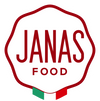A unique delicacy: the sardinian truffle

This tuber has been highly appreciated since ancient times. In fact, in the mid-1500s, a treatise was dedicated to it, the 'Opusculus de tuberis', which praised the opinions of naturalists and historical anecdotes. The truffle has always been a prized product of the earth, admired for its scent which, for some, was a 'fifth essence' as it caused an ecstatic effect on human beings. Even in ancient times, the most prized truffles were by far those coming from Monferrato. Nowadays, we know that the production areas have expanded throughout the peninsula, bringing to light not only the precious white truffles from Piedmont but also the black ones from Tuscany, Marche and Abruzzo. Our Sardinian truffles, typical of the Laconi, area, a village on the border of Barbagia and Mandrolisai.
But let's start from the beginning: what are truffles and where do they come from?
As a rule, there are no truffle cultivations, or at least the very few that do exist are on an experimental basis. It is a un tuber, un an underground fungus that grows underground under very specific conditions. The first of these is the presence of plants that are suitable to its formation: truffles are often found in the woods near specific shrubs with which they establish a symbiosis underground. Black truffles prefer tree species such as holm oak, hazelnut, hornbeam and linden; white truffles prefer clearings inhabited by oaks, poplars, hazels and willows. The environment in which the forest is located is also of great importance: the truffle, in fact, is a sort of environmental sentinel: it does not tolerate any kind of Nature pollution.
 |
HarvestingSince ancient times, truffles have been collected with the help of... noses. The most famous is that of the famous suckling pig which is currently legal only in France, but it is not in Italy. Nowadays man's best friend has also become the best truffle hunter. We are talking about the dog and the most commonly used breeds, such as the famous Lagotto Romagnolo, which is naturally trained from birth. The truffle is not a perennial tuber, i.e. it cannot be found all year round. There are different varieties that grow in different periods: the white truffle , which grows from September to January, the prized black truffle , which is collected from November to mid-March, and the summer truffle, also known as the scorzone truffle, which is collected from May to December. |
Storage and cookingIn order to preserve its aroma, truffles should be eaten as soon as they are picked. We recommend a few tips on how to store them at their best:
|
 |
La selezione di Janas Food
 |
Il pecorino stagionato al tartufoPreparato artigianalmente da un piccolo produttore, questo delizioso formaggio pecorino stagionato racchiude tutta l’anima della Sardegna. Buono da gustare così, da solo, assieme al nostro pane Carasau e un goccio di miele per esaltarne le doti, oppure grattugiato sopra la nostra selezione di pasta fresca. Scopri di più su questo prodotto |
La crema di formaggio al tartufoQuesto sorprendente formaggio spalmabile arricchito al tartufo nero di Sardegna, è realizzato con materie prime di pregio per portare sulle tavole tutto il gusto unico dei prodotti freschi e autentici. Un delizioso pecorino fuso s’incontra con un profumato tartufo di Laconi in una vellutata crema decisa e morbida creata per stupire i palati più esigenti e per coloro che sono alla ricerca di nuovi sapori e nuove emozioni. Perfetta per condire primi piatti di pasta, riso e ravioli e per portare raffinatezza e originalità a ricette semplici come tartine per antipasto. Clicca qui per scoprire di più |
 |

